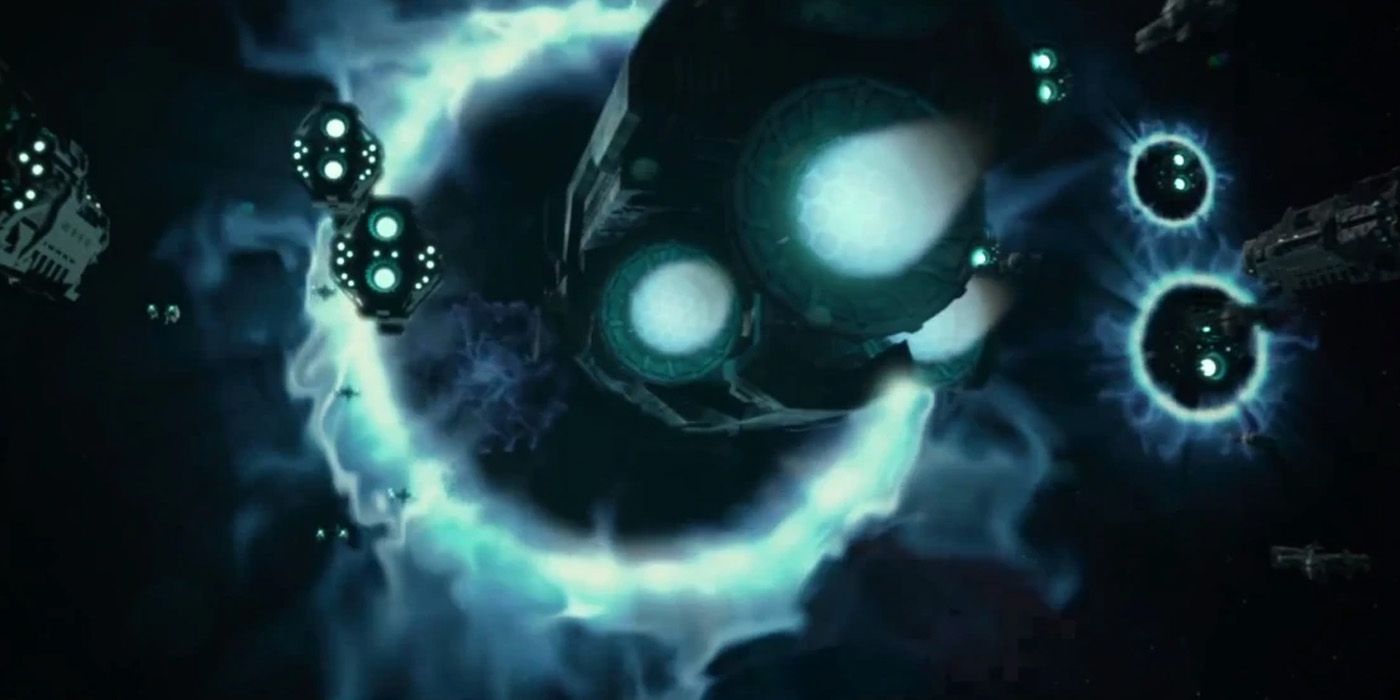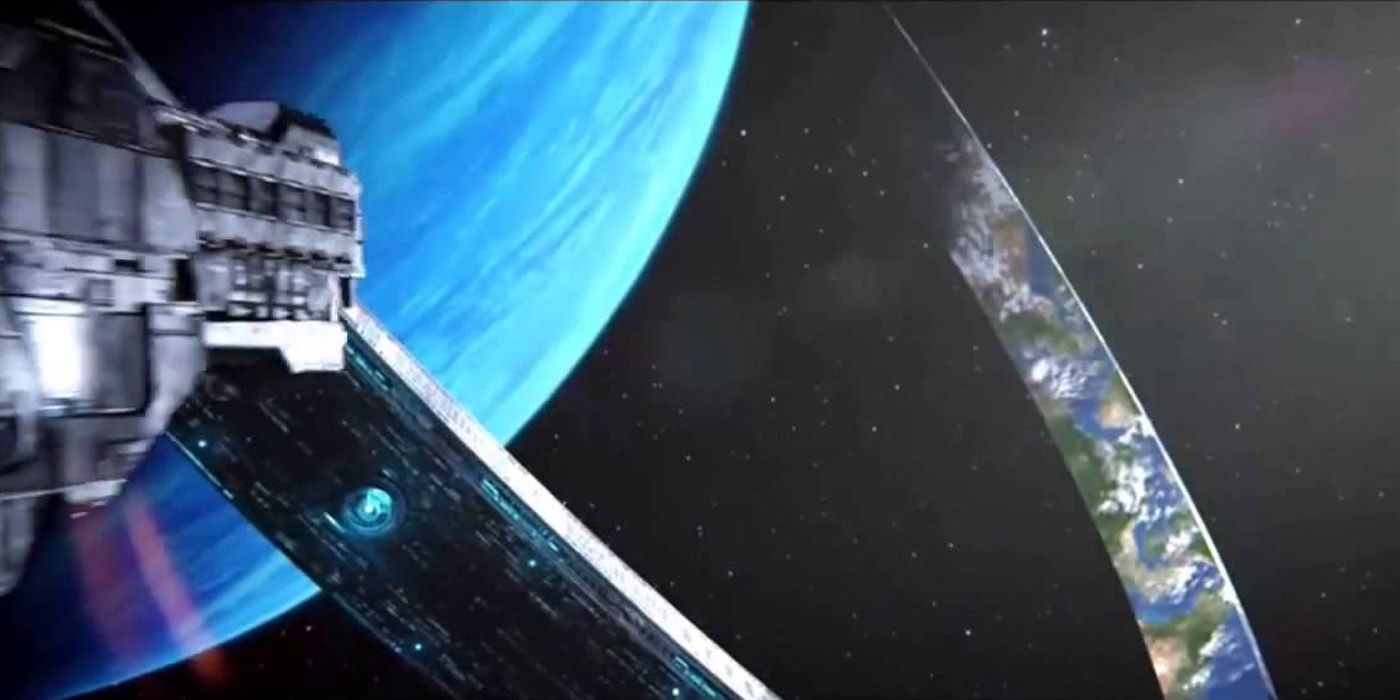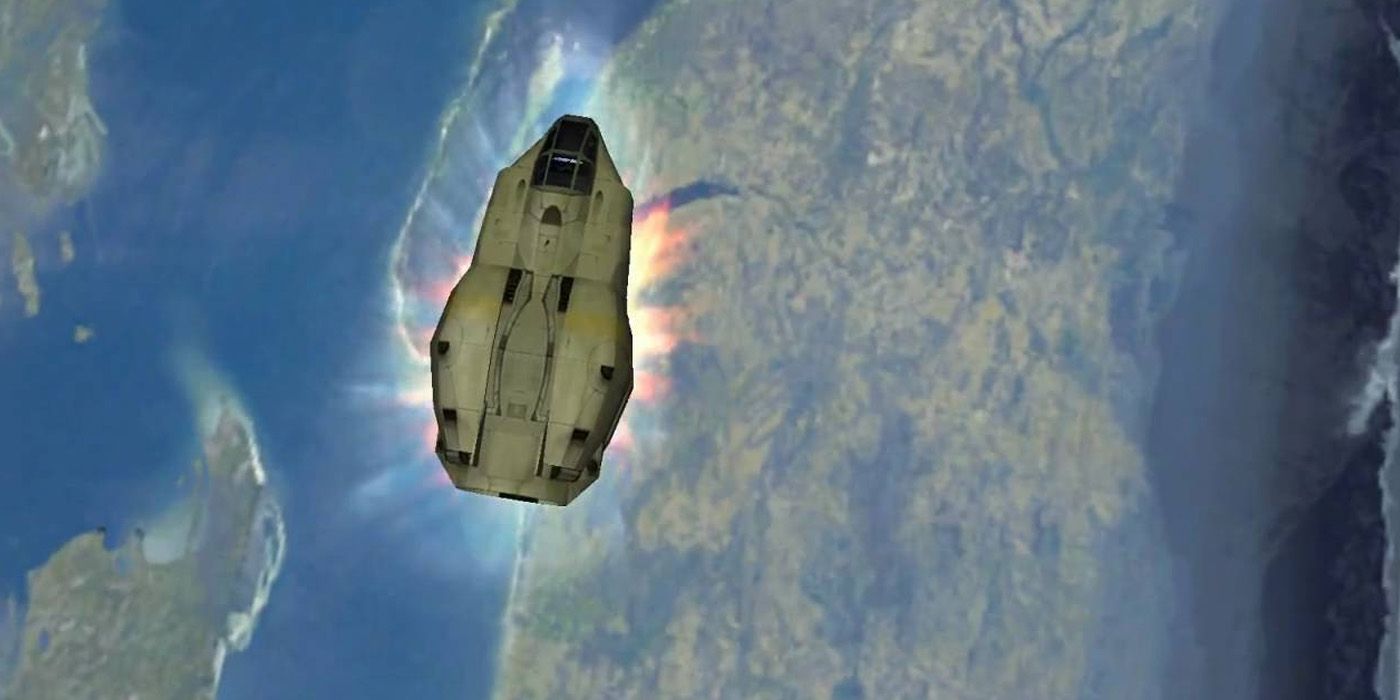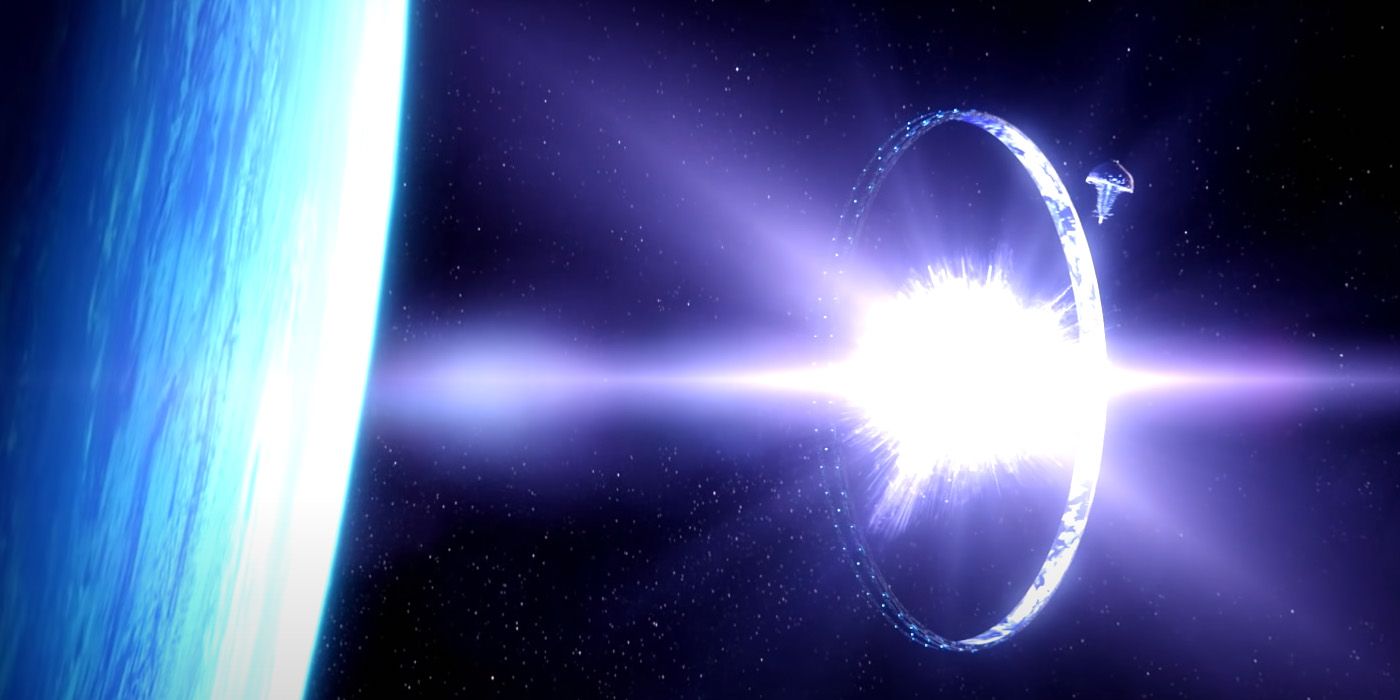Fans of 343 Industries' Halo franchise will fondly remember the series for its incredible action gameplay, entertaining multiplayer, and engaging storylines. It's as incredible taking on the role of Master Chief as it is immersing oneself in the United Nations Security Council and all of Earth's advanced space weaponry.
Unfortunately, despite the massive fandom surrounding Halo, eagle-eyed science enthusiasts won't deny the series has its flaws in terms of their depiction of space. Additionally, others might argue nitpicking about space in science fiction might be a bit overboard. However, some might consider this activity quite the fun intellectual exercise. Just what sort of shenanigans does Halo's space pull off that won't fit with conventional astronomy?
10 Space Accurate: Slipstream Follows Physics
Similar to Star Wars' Hyperdrive system, Slipstream bypasses the conventional lightspeed limit by helping ships traverse in its multidimensional space. Like Hyperspace, Slipstream seems possible– at least, physics-wise. In a 2007 paper, M. Rab and his colleagues referred to a process called "matterwave transport without transit." In this method, outside observers of a quantum particle might think that quantum theory's 11 dimensions have collapsed into a singularity in order to facilitate said particle's transportation. Instead, in extreme distances, a quantum particle ignores conventional physics and follows relativity instead.
In short, causes can happen after effects, time doesn't need to be linear, and particles can be in multiple points. Following this principle, Slipstream space might represent this process and may explain space travel in Halo without the need to travel in actual spacetime.
9 Not-So-Accurate: Slipstream Stops After The Math
Halo's Slipstream concept appears possible on paper, but possibilities for a real-life Slipstream stop as soon as people wander outside the math. Despite quantum physics hinting towards 11 dimensions, there are a lack of studies and observations on their actual existence. Moreover, while simulations do predict various faster-than-light (FTL) scenarios, humanity lacks the resources to pull off these incredible feats.
As such, despite the math existing for Slipstream travel and its counterparts, there exists no technology that can hold their "entrances" and "exits" long enough and large enough for ships.
8 Space Accurate: Slipstream Is Based On Existing Principles
Despite the fictional nature of the Slipstream, Halo does try to blend it with a bit of realism. The UNSC's ships use their accelerators to create micro black holes, "manipulating" them into shrinking vessels into Slipstream space without much damage. These black holes then quickly evaporate via Hawking radiation.
As such, Slipstream space may in fact represent the "space" in-between two sides of a Wormhole. Aside from being a go-to FTL source in sci-fi, Wormholes appeared after Albert Einstein's discovery of the curvature of space. After all, it should be possible to "fold" spacetime into itself to connect two points. Theoretically, the event horizon of a black hole may be able to lead into the event horizon of a white hole.
7 Not-So-Accurate: Slipstream Versus Physics
Unfortunately, possibilities of Slipstream space via Wormholes may be sucked into oblivion. "Compressing" two points of spacetime would require placing a mass in front of the ship akin to a black hole. If scientists find a way to do this, conventional black holes would have the wormhole past its event horizon. As such, the event horizon will spaghettify (literally) the ship before entering.
Even if the technology exists that will position the wormhole outside the event horizon, negative mass particles will be needed to keep it from collapsing. Unfortunately, no particles with negative mass have been discovered yet. Lastly, even if scientists meet all these requirements, white holes have never been observed in the universe yet which literally eliminates the other exit of the Wormhole.
6 Space Accurate: Halos And Ringworlds
Interestingly, Halo's titular Halos aren't that far-off from reality either. Halos in Halo seem to find inspiration from Larry Niven's Ringworld concept. Niven's Ringworld first appeared in the 1970 novel Ringworld, which featured a ring-shaped intermediary between a planet and a Dyson Sphere. In science fiction, Dyson Spheres are megastructures designed to surround a star and collect its solar energy output.
In the case of a Halo, an article estimates that if the Halo have 5,000-kilometer radii, they're likely 320 kilometers wide and possess a surface area of 10-million square kilometers. This measurement places a Halo a bit larger than Canada's surface area. Moreover, the article goes further by estimating the Halo would likely be 22.3-kilometers thick with, considering the existence of underground facilities, a mass of around 1,700-million-billion kilograms.
5 Not-So-Accurate: Gravity And Tricky Aim
Halos don't just stop at being megastructures, however. Halo games show that Halos have life and a working atmosphere. As such, Halos in Halo need to have working gravity.
Again, following the basis that Halo has a 5,000-kilometer radius, simulating Earth's gravity requires it to spin around seven kilometers every second. A Halo ring will have to spin around 19 times a day. Unfortunately, this spin does affect things happening inside the Halo, such as combat.
For instance, a blaster fired upwards in a Halo won't return downward. Rather, the Halo's spin will force the projectile to fall around 18-kilometers downrange. If the games had to follow this logic, battles in Halo would be very different.
4 Space Accurate: Battles Not-So-Explosive
Fancy explosions in Star Wars can't occur in space. The reasoning behind this lies in the reality that conventional explosions on Earth need oxygen to burn. The lack of oxygen in space means impact won't cause dramatic explosions like in other science fiction media.
Interestingly, Halo does approach the matter of interstellar battles with a degree of finesse. In fact, scientists describe space battle explosions as short "bursts"– something most Halo space battles demonstrate. Perhaps the only point of contention here would be the flowing wisps of energy that come with energy blasts, as they should largely be unseen in real life.
3 Not-So-Accurate: Landing And Travel
Unfortunately, gravity in a Halo might cause major problems for landing. Ships trying to get to the megastructure might experience complications. In the same article, it's explained there's no safe way of going into the Halo without "following" its seven kilometer-per-second spin. In fact, failure to do so will result in the ship crashing into the ring.
As such, unless all ships have extremely advanced AI, landing in a Halo might turn out to be unnecessarily difficult. Ships have to consider that landing from outside the ring and from "inside" require different calculations.
2 Space Accurate: Answering The Fermi Paradox
In Halo lore, Humanity isn't the only advanced civilization in the galaxy. A long time ago, humans stood alongside Forerunners as one of the most technologically-advanced civilizations at the time. Unfortunately, the human-Forerunner wars caused humanity to revert back to its hunter-gatherer state.
This little tidbit of lore uses a variation of an explanation to the popular Fermi Paradox, which asks where other intelligent civilizations are if the universe is extremely large. In Halo, this solution appears in the form of intelligent life waging war against each other.
1 Not-So-Accurate: Space And Sound Don't Mix
As awesome as noise may be, sound doesn't exist in space. As such, the catastrophic space battle for Reach shouldn't have any audible sounds. This reasoning lies in the fact that vibrations need to hit molecules in order to become audible. The emptiness of space means there's no way for sound to travel.
Of course, physics enthusiasts might have read that sound does in fact exist in space. This revelation is true, at least in an unconventional sense. In 2003, scientists discovered that a supermassive black hole has generated a hum that's a million-billion times deeper than the lowest-possible frequency sound audible to humans. This was possible thanks due to its relativistic jets which generate bursts of extremely deep (but largely inaudible) sound waves.











